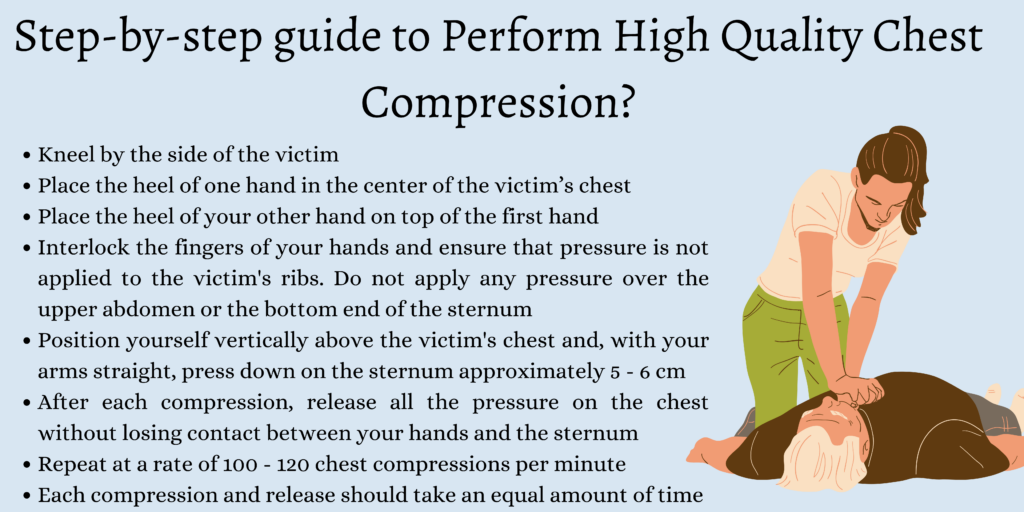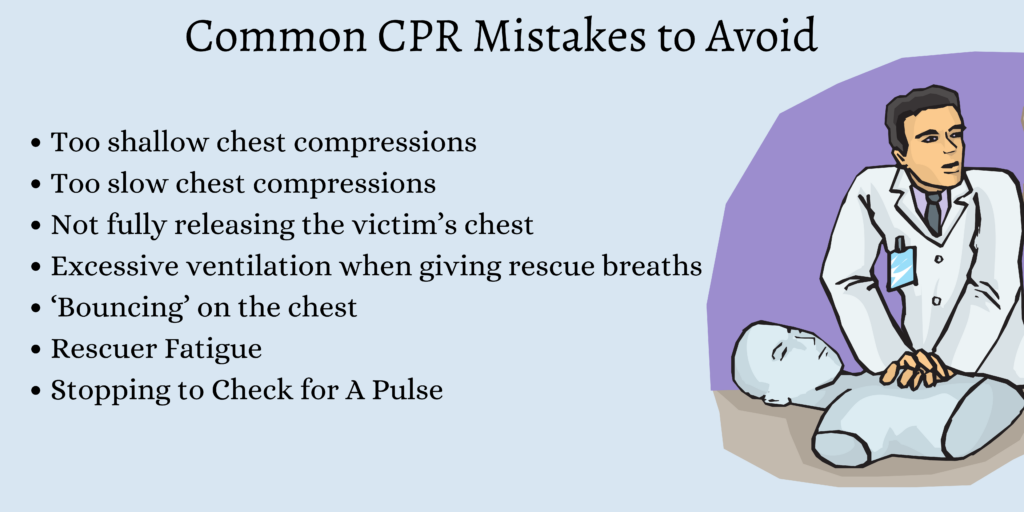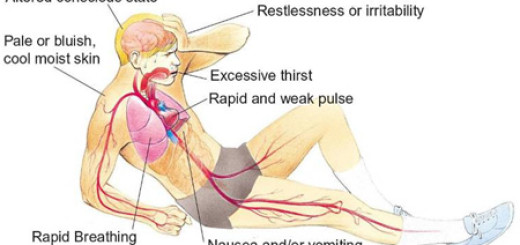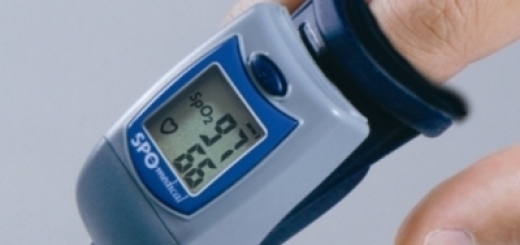Components of High Quality CPR
Effective chest compressions are the most important component of Cardiopulmonary Resuscitation (CPR). High quality CPR involves rescuers being aware of how to deliver effective chest compressions to a victim in order to improve the chances of a successful defibrillation.
Hands-only CPR is now being taught to laypeople as it is recognized that rescue breaths are not as important in the initial few minutes after a cardiac arrest. In addition, performing rescue breaths may put off bystanders from intervening and beginning vital CPR.
5 Components of High-Quality CPR
In 2020, the American Heart Association (AHA) and the European Resuscitation Council (ERC) updated their guidelines to outline the five crucial components of high-quality CPR.
These components are:
- High chest compression fraction >80%. It’s the proportion of time a first aider spends performing chest compressions during CPR.
- Chest compression rate: between 100-120 compressions per minute. It’s the optimum rate needed to give the patient the highest chance of survival. The AHA even has a playlist, ‘ Don’t Drop the Beat,’ featuring specially chosen tracks that match the ideal 100–120 bpm chest compression rate.
- Chest compression depth: between 2-2.4 inches (5-6 cm) for adults and adolescents, 2 inches (5cm) for prepubescent children, and 1.5 inches (4cm) for infants.
- Avoid leaning on the chest in between compressions. It allows for full chest recoil. Ensure that the time spent compressing the chest matches the length of time enabling the chest to recoil and expand.
- Avoid excessive ventilation: maintain two breaths for every 30 compressions. Excessive ventilation (delivering too many breaths) lowers the chest compression fraction and reduces the chance of survival during cardiac arrest.
Performing High-Quality Chest Compressions

To achieve a high chest compression fraction, follow these steps:
- Kneel by the side of the victim
- Place the heel of one hand in the center of the victim’s chest
- Place the heel of your other hand on top of the first hand
- Interlock the fingers of your hands and ensure that pressure is not applied to the victim’s ribs. Do not apply any pressure over the upper abdomen or the bottom end of the sternum
- Position yourself vertically above the victim’s chest and, with your arms straight, press down on the sternum approximately 5 – 6 cm
- After each compression, release all the pressure on the chest without losing contact between your hands and the sternum
- Repeat at a rate of 100 – 120 chest compressions per minute
- Each compression and release should take an equal amount of time
You may feel a victim’s ribs break when performing high-quality CPR. This is often unavoidable and you should not stop performing continuous chest compressions.
Ensure your hands are in the correct position and continue delivering high quality CPR until emergency medical services (EMS) take over. Healthcare providers studies show that the majority of cardiac arrest victims sustain at least one rib fracture.
Common CPR Mistakes
Effective CPR is a skill that requires practice. Common mistakes that occur when delivering chest compressions include:
1. Too shallow chest compressions
Many people underestimate the force it takes to administer the correct compression depth of 2-2.4 inches (5-6 cm) on an adult victim’s chest.
They are afraid of harming the victim and potentially breaking their ribs. However, shallow chest compression will not effectively pump blood to a victim’s dying organs. In this life-or-death situation, broken ribs are a small price to pay for a life saved.
2. Too slow chest compressions
By pausing between compressions or delivering compressions at too slow a rate, the victim’s organs will become starved of oxygen and die.
Administering 100 to 120 compressions per minute is much faster than many think, a little less than two every second.
3. Not fully releasing the victim’s chest
When performing high-quality CPR, the victim’s chest must be allowed to recoil and expand between each compression fully. This recoiling action pulls lifesaving blood back into the heart.
If a first aider leans on the victim’s chest, recoil and expansion are diminished, which could have fatal consequences.
4. Excessive ventilation when giving rescue breaths
In recent years, the guidelines around rescue breaths during CPR have changed. Now, much more emphasis is put on chest compressions. Rescue breaths are considered secondary (and optional for lay responders).
Non-trained individuals should focus on compression-only CPR, and trained first aiders should stick to the 30:2 compression to breaths rule.
5. ‘Bouncing’ on the chest
It occurs when the rescuer’s hands don’t remain in contact with the victim’s chest. Keep your hands interlocked and in the center of the chest wall while avoiding leaning onto the victim.
6. Bending the arms
If arms are bent during chest compressions, the muscles must work much harder to administer the same force, and the first aider is likely to tire quickly. Straight arms help to drive body weight downwards with enough power to reach the proper compression depth with the least energy expelled.
7. Rescuer Fatigue
Administering high-quality CPR at the proper compression rate and depth is tiring, even for the fittest of people. A tired first aider will likely lean on the victim’s chest and fail to compress the chest to the required amount. As a result, the victim’s chances of survival are lower.
If more than one first aider is at the scene, switch the person delivering CPR every 2 minutes (roughly the equivalent of 5 rounds of 30:2 compression to breath cycles).
8. Stopping to Check for A Pulse
Checking for a pulse may seem important, but any interruption to chest compressions could have fatal consequences.
Many health bodies now recommend that non-medics avoid pulse checks entirely, even before CPR has commenced. It’s because even trained first aiders can struggle to find a pulse, and this hesitation can waste valuable lifesaving time.
So, while administering CPR, never stop to check a victim’s pulse.
Conclusion
Poor-quality CPR and high-quality CPR can be the difference between life and death. So, learning the correct way to administer this lifesaving procedure is one of the essential elements of first aider’s training. If you are learning CPR, why not test your skills and knowledge with our free CPR quiz, and see how you score?







thanks
excellent lessons, thx
Thank you!
Glad you’re back John. Looking forward to it.